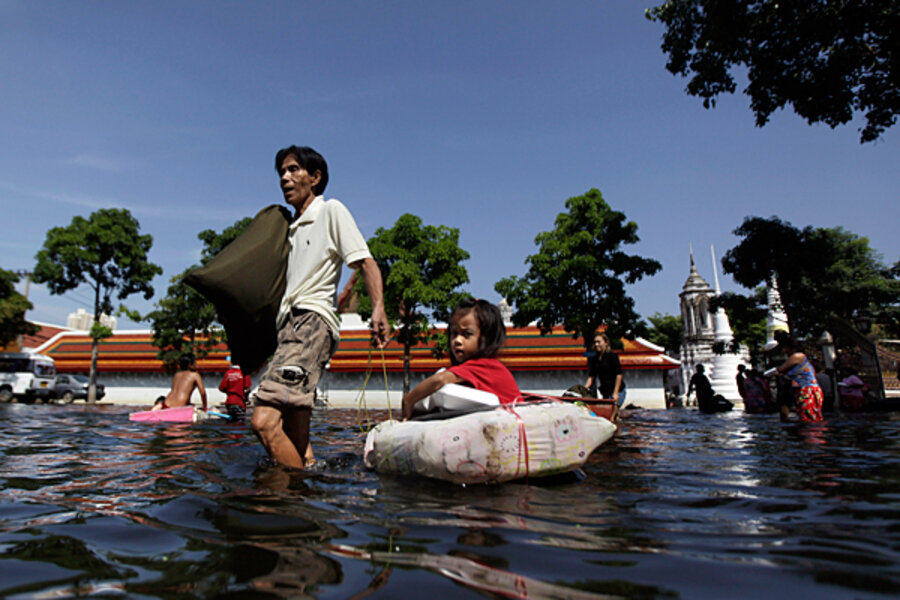Thailand floods: When journalists embellish visuals
Loading...
| Bangkok, Thailand
Central Thailand’s devastating months-long flood, which has so far cost some 500 lives and billions of dollars in damage, has made for countless poignant scenes and memorable images. But that hasn’t stopped some journalists from staging their own, highlighting an ongoing issue that undermines the credibility and purpose of reporting.
One recent morning a British television station’s local correspondent stood knee-deep in water speaking to the camera.
A few yards away, several Thais stood, unmoving, on a small embankment of sandbags, gazing pensively at their feet. These locals, the foreign reporter explained, were faced with a daunting challenge: whether they should dare to cross to the other side of a small alley covered in water.
Off camera, boys and girls splashed about, laughing and smiling, in the flood, while other locals, wearing plastic flip-flops or rubber wading boots, went about their business.
Once the foreign journalist had said his piece on camera, he turned to the Thais standing on the small sandbags and thanked them for their cooperation.
They smiled, stepped into the water, and walked away. They seemed quite unfazed by the prospect of wading through 10 or so inches of water in a country where many people are used to seasonal floods, if not as severe as this year’s.
Admittedly, several miles away on the northern outskirts of the city, where flood waters stood 3- to 5-feet deep, many locals were indeed prevented from getting around at ease. But that was not the case here.
The Society of Professional Journalists' code of ethics, which is widely used as a guide to thousands of journalists, says that journalists should be honest when reporting and "Avoid misleading re-enactments or staged news events. If re-enactment is necessary to tell a story, label it."
It’s also demeaning to locals who end up being used as mere extras in a reporter’s scripted narrative.
At the risk of breaching journalists’ work etiquette by interfering in someone else’s work, I pointed this out to him.
“Have you done much television journalism?” he shot back, implying either that staging events is a common enough practice in television news or that the medium’s heavy dependence on visuals requires stage-management now and then.
He was certainly hardly alone in that. Farther up the street, at a small open-air market near the city’s Grand Palace, another TV crew was staging an event for the camera.
Chancing upon a couple of young Thai Army soldiers loitering about at an embankment, they asked them to pretend they were piling up sandbags on it.
“Don’t smile!” the Thai cameraman chided. “Please try to act serious.”
By the third take, all went swimmingly.
Shortly after, I spotted a press photographer arranging flotsam for a photograph.
That doesn’t surprise Paul Christoforou, a veteran British news photographer who has been on assignments around the world and now works in Thailand.
Staging events for the camera, whether still or video, “has always been done,” Christoforou says. “All the best photographers, all the best cameramen do it. It’s wrong, but that’s just the way it is.”
He adds: “[Some news] agencies even tell you: ‘If you can’t get the shot, stage it. But we don’t want to know about it.’”





